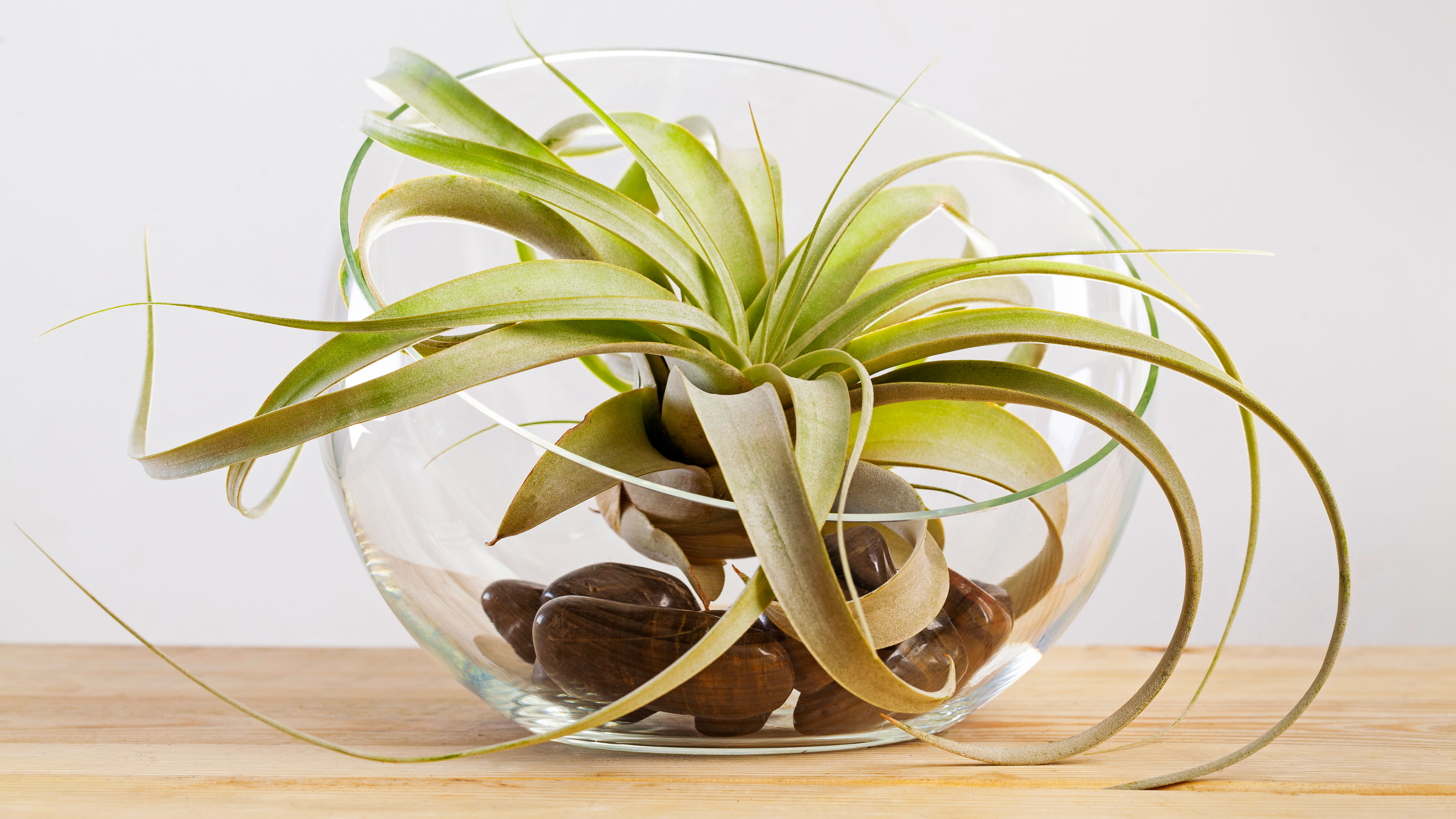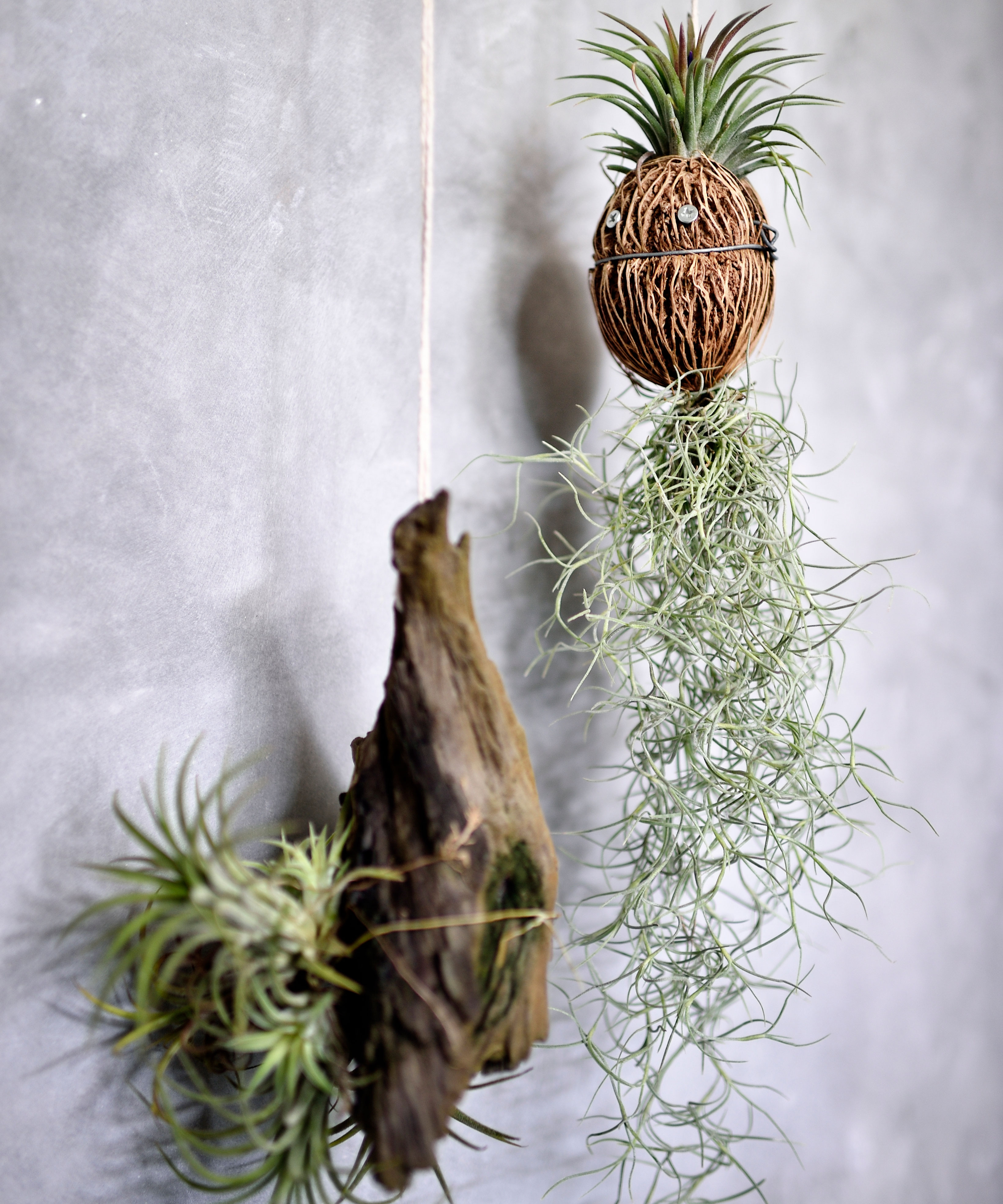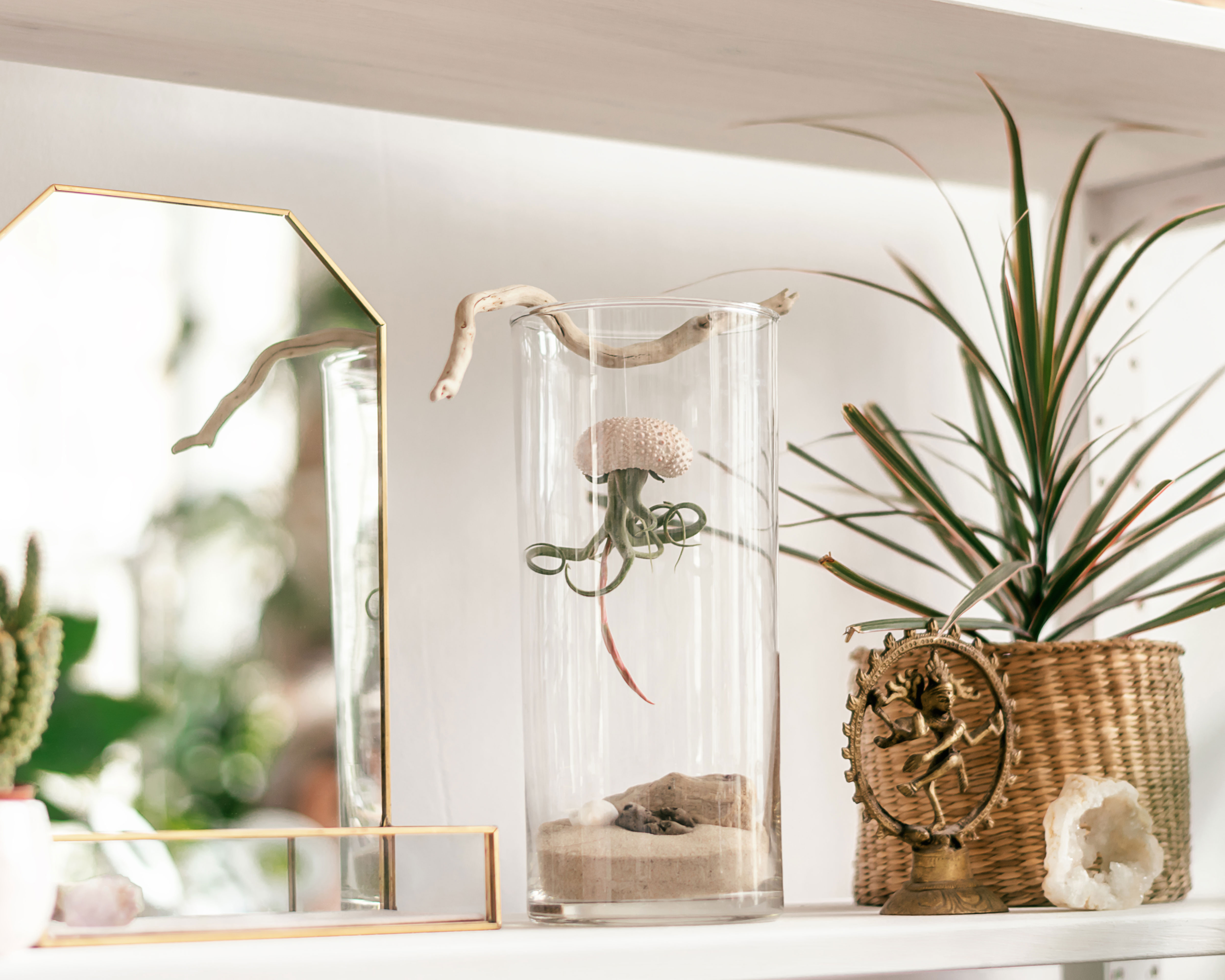How to water an air plant – the best methods to use and how often
Find out how to water an air plant to keep these wonders of nature happy and healthy


Existing without the need for soil, air plants seem to defy nature. Contrary to their name, however, these unique and intriguing plants can't exist purely on air alone: you need to know how to water an air plant to keep it thriving in its air-borne state.
With wiry roots that, in the wild and gardens, attach themselves to branches and rocks, air plants – or members of the Tillandsia genus – also make wonderful additions to terrariums, 'aeriums', or glass planters as house plants.
Their ornamental appearance and colorful flowers make them great additions to your collection of indoor plants, so find out how to water an air plant to ensure it thrives.

Rachel is senior content editor, writing and commissioning gardening content for homesandgardens.com, Homes & Gardens magazine, and its sister titles Period Living Magazine and Country Homes & Interiors. From investigating the finer points of pruning, to exploring the secrets of great garden design, she researches and calls upon the expertise of horticultural experts far and wide to answer the burning gardening queries
How to water an air plant

Air plants love a humid environment, which makes them among the best bathroom plants – they work particularly well in hanging glass planters or on windowsills.
That said, they are among the best low maintenance indoor plants, so can suit many situations around the home.
When it comes to how to water an air plant, there are two schools of thought: 'some people swear by misting, others swear by soaking, and then there are those that use a combination of both in the air plant care regimen,' explain the experts at Pistils Nursery in Portland, Oregon.
The air plant's location is also an important factor in how and how often it is watered. If you find your air plant turning brown, it may be due to how often or little you are watering it.
'The watering needs of the air plant can vary dramatically depending on the space in which it is placed,' explain the Pistils Nursery experts. So first evaluate:
- How much sunlight is the air plant receiving?
- What is the temperature of the room? Which can obviously vary throughout the year.
- Is the air plant located near a source of heating, such as a fireplace or air vent?
- Is it in a humid room? This will often be the case for bathroom or kitchen plants
- Is the air plant standalone, planted among other plants in a terrarium, in an 'aerium' – with other air plants, or mounted? All of which will dictate the methods available for watering an air plant
Watering needs will vary between types of air plants, with those that live in desert-type conditions, such as the xerographica, being more drought tolerant and therefore requiring less water.
Do not let these factors put you off adding these little beauties to your home, though – as long as their basic needs are met, air plants really are easy indoor plants to care for and they offer endless possibilities when it comes to decorating with plants.
Below are the various methods for how to water an air plant.
Watering an air plant by soaking
One method of watering an air plant is by soaking it in water – rainwater preferably.
'We recommend letting the plants soak in a container of water for at least 15 to 20 minutes. You can add in a longer soak once a week or every other week, which can last an hour or two,' say the experts at Air Plant Design Studio in Florida.
They recommend the soaking method for mesic air plants (many of which have shiny, waxy leaves), but do not recommend it for xeric air plants that are more drought tolerant and used to dry climates – check with your supplier which variety yours is.
After soaking, gently shake any excess water from your plant. 'Turn it upside down and place it on a towel in a bright and well-ventilated space. This is very important to do, as air plants will quickly rot if they are allowed to stand in excess water,' add the experts at Pistils Nursery.
Watering an air plant by dunking
The dunking method for watering an air plant is particularly suited to the xeric varieties that grow in desert-like dry and arid climates.
To water in this way, simply fill a container or sink with water and dunk the plant multiple times so it is fully saturated with water.
As before, shake any excess water from the air plant, turn it upside down, and place it in a bright space to dry out thoroughly.
If your air plants are in a terrarium or aerium you can use the soaking or dunking watering methods by first removing the plant from the container and letting it dry out completely before placing them back in.

How to water an air plant by misting
Misting your air plants between soaking or dunking can help provide them with extra moisture in hotter and drier conditions.
Misting is not generally recommended as the sole watering method as 'the plants need to be fully saturated, and most of the time misting does not do this,' explain the experts at Air Plants Design Studio. However, it might be the only way of watering air plants that can't be removed from containers, or which are mounted.
Using a plant mister or spray bottle, mist around rather than into the plant.
'Start with twice weekly misting, and adjust as necessary,' say Pistils Nursery experts.
How often should I water my air plant?
How often you should water an air plant will vary throughout the year depending on the temperature and humidity.
In summer, when temperatures are higher, it may be necessary to water an air plant more frequently, whereas it may need watering less often in cooler, humid conditions, such as winter and spring.
Just as with the question of how often you should water indoor plants, where the air plant is located will also impact the amount of watering required. If it is in the naturally humid environment of a bathroom then it will not require as frequent watering, whereas if it is among your bedroom plants or in a space that is warm year-round, it will probably need watering more regularly.
In summer and early fall, you may need to water an air plant two to three times a week, allowing it to dry off between watering. 'For most environments and plants, we recommend starting out with once or twice a week soaks for about 15 minutes and see how the plants respond,' say the experts at Air Plant Design Studio.
In late fall, winter, and early spring, especially when temperatures drop below 54ºF and the atmosphere is humid, you may be able to reduce this significantly, possibly to once every few weeks.
How do I know if my air plant needs water?
You will know if your air plant needs water by a couple of visible signs. If the tips are turning dry and crispy or the leaves become more concave then this is a sign you need to water an air plant.
Unfortunately, if it is the reverse situation and your air plant is showing signs it has been overwatered, then it is often too late to correct this. 'If the base of the plant turns brown or black, and leaves are falling out, it is likely that your plant has started to rot,' says the experts at Pistils Nursery.
Can you use tap water for air plants?
It is best to avoid using tap water for air plants, where possible. Tap water contains various chemicals that are harmful to plants when they are consistently watered with it. It also contains dissolved sodium bicarbonate, which can build up over time and prevent the air plants from effectively absorbing moisture through its trichomes – its special water-absorbing cells.
Try to water air plants with rain water, or filtered water.
Sign up to the Homes & Gardens newsletter
Design expertise in your inbox – from inspiring decorating ideas and beautiful celebrity homes to practical gardening advice and shopping round-ups.
Rachel is senior content editor, and writes gardening content for homesandgardens.com, Homes & Gardens magazine, and its sister titles Period Living Magazine and Country Homes & Interiors. She has written for lifestyle magazines for many years, with a particular focus on gardening, historic houses and arts and crafts, but started out her journalism career in BBC radio, where she enjoyed reporting on and writing programme scripts for all manner of stories. Rachel then moved into regional lifestyle magazines, where the topics she wrote about, and people she interviewed, were as varied and eclectic as they were on radio. Always harboring a passion for homes and gardens, she jumped at the opportunity to work on The English Home and The English Garden magazines for a number of years, before joining the Period Living team.
-
 Kris Jenner's 'organic modern' living room champions the most talked-about trend of 2025 – it's the new way to do luxe-minimalism
Kris Jenner's 'organic modern' living room champions the most talked-about trend of 2025 – it's the new way to do luxe-minimalismSimple silhouettes, organic textures, and industrial nuances infuse functional pieces with elegance to create an effortlessly chic and easy-to-live-with living space
By Jennifer Ebert Published
-
 I’m an HVAC technician, and this is when I turn my AC on each year – plus 5 checks I always do beforehand
I’m an HVAC technician, and this is when I turn my AC on each year – plus 5 checks I always do beforehandSave yourself an AC hassle by running my checks and turning it on before big heat hits
By Josh Mitchell Published